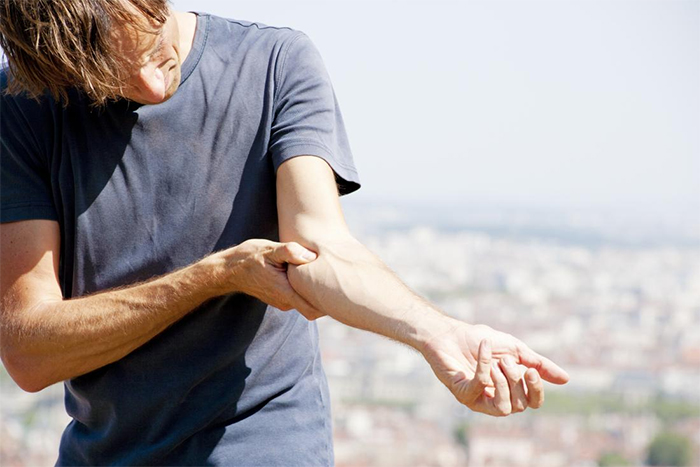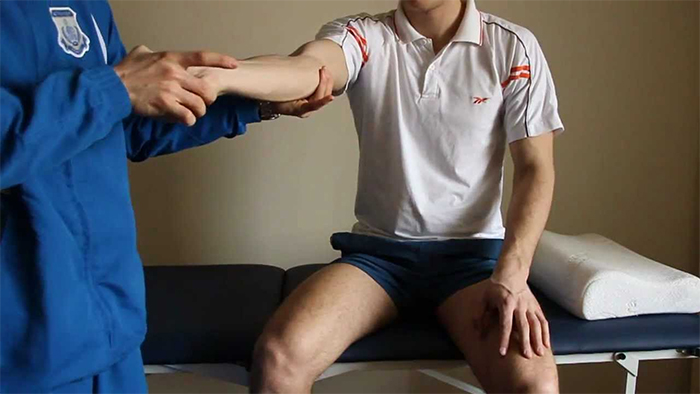Golfer’s Elbow is referred to the pain originating from the tendons in the elbow. In the beginning, the symptoms are more recurrent for one or more reasons such as weightlifting, carrying heavyweight bags, or performing any other physical intensive tasks. The initial symptoms last a few days or weeks with proper care. Overlooking the symptoms can result in elevated pain affecting your routine activities. Want to know more about the condition? Read On!

Symptoms of Golf Elbow
The most common symptom is the pain inside the elbow. The condition can get worse especially when you move your wrists or perform physical activities. You will experience a feeling of stiffness in the tendon. Do not be confused by the name of the condition. It can occur because of several other reasons – not just playing golf. It is more of a tendinopathy concern. Therefore, it’s crucial to carry out a detailed examination of the tendons to figure out the root cause of the problem. Let’s take a look at some of the commonly occurring symptoms:
Golfer’s Elbow Diagnosis
The condition can be identified by a specialized doctor or physiotherapist. They are more likely to ask you about the history of the injury and any other associated symptoms. In most cases, it’s important to go through a detailed physical examination but may not be necessary primarily depending on your existing health condition. The pain radiates over the tendon when the forearm muscles are contracted.
Golfer’s Elbow Treatment
If you are suffering from this injury, it’s important to get prompt golf elbow treatment before the condition gets worse. One simple way is the ice application on the elbow for approximately 15-20 minutes. Apply the ice back three times every day. At the same time, we recommend you to give enough rest to the injured elbow and prevent any aggravating activities. You can discuss this with a professional who will better guide you on how to limit stress and recover quickly.
For pain management, your doctor may recommend a nonsteroidal anti-inflammatory drug such as aspirin or naproxen to minimize pain and swelling. This medication will help you with quick pain relief. On the other hand, you may get a vaccination or injection of a painkiller or corticosteroid in the elbow. This will provide you pain relief and swelling for a time being. Keep in mind these treatment options may not have lasting effects.
Next, we will talk about physical therapy – an effective way to relieve pain and speed up the recovery process. It’s important to follow the prescribed exercises and minimize stress on the elbow. Also, it prevents the risk of recurrence.
Here we go with some of the recommended exercises!
Stretching

The stretch exercises focus on stretching the wrist flexor muscles inside the forearm. These exercises aim at improving the range of movement of the wrist and arm. You can perform the exercise either actively or passively. You can ask a physiotherapist to help you with the exercise or perform them on your own from the comfort of your home.
Eccentric Exercises
Muscle-strengthening exercises are commonly segmented into concentric and eccentric exercises. In the concentric movements, the muscles will contract while in the eccentric movements they relax. An example of a concentric exercise is holding a weight in the hand and dragging it towards the body. On the other hand, lower the weight gradually makes an eccentric exercise. These exercises focus on strengthening your muscles.
Ball Squeezes
One of the easiest exercises! All it involves is a stress reliever or soft rubber ball. You need to position the ball in the palm of the injured hand making a fist around. The repetitive squeezing and releasing will make your forearm tougher and stronger.
Finger and Wrist Extensions
For finger extensions, squeeze the five fingertips and bounce a rubber band around. Keep the fingers separated from one another considering the elasticity of the rubber band. For wrist extensions, you will need a 1-pound weight. Position the affected forearm on your knee. You can also use a table. Keep your hand adjourned over the edge. As soon as you hold the weight, raise and lower it gradually.
The recovery process of Golfer Elbow is slow and therefore make sure to seek prompt medical care. Here are some of the conservative treatment options available often performed by a physiotherapist.
On the other hand, you can follow a few tips on your own.

Ultrasound-Guided Injection Therapy
If the pain remains consistent and getting worse over time, a doctor may recommend injection therapy. This is mostly performed when conservative management does not work. Injection therapy is suggested if:
Conclusion
Unfortunately, if you suffer from Golfer’s elbow it can cause pain and inflammation in the tendons inside the forearm that connects to the elbow. The pain will gradually radiate across the forearm and may become chronic if left untreated. If you have read this far, you are more likely to understand how important it is to get the injury treated immediately. Focus on the prescribed medication and recommended exercises to build strength, increase flexibility and relieve and prevent pain.
Be the first to post comment!